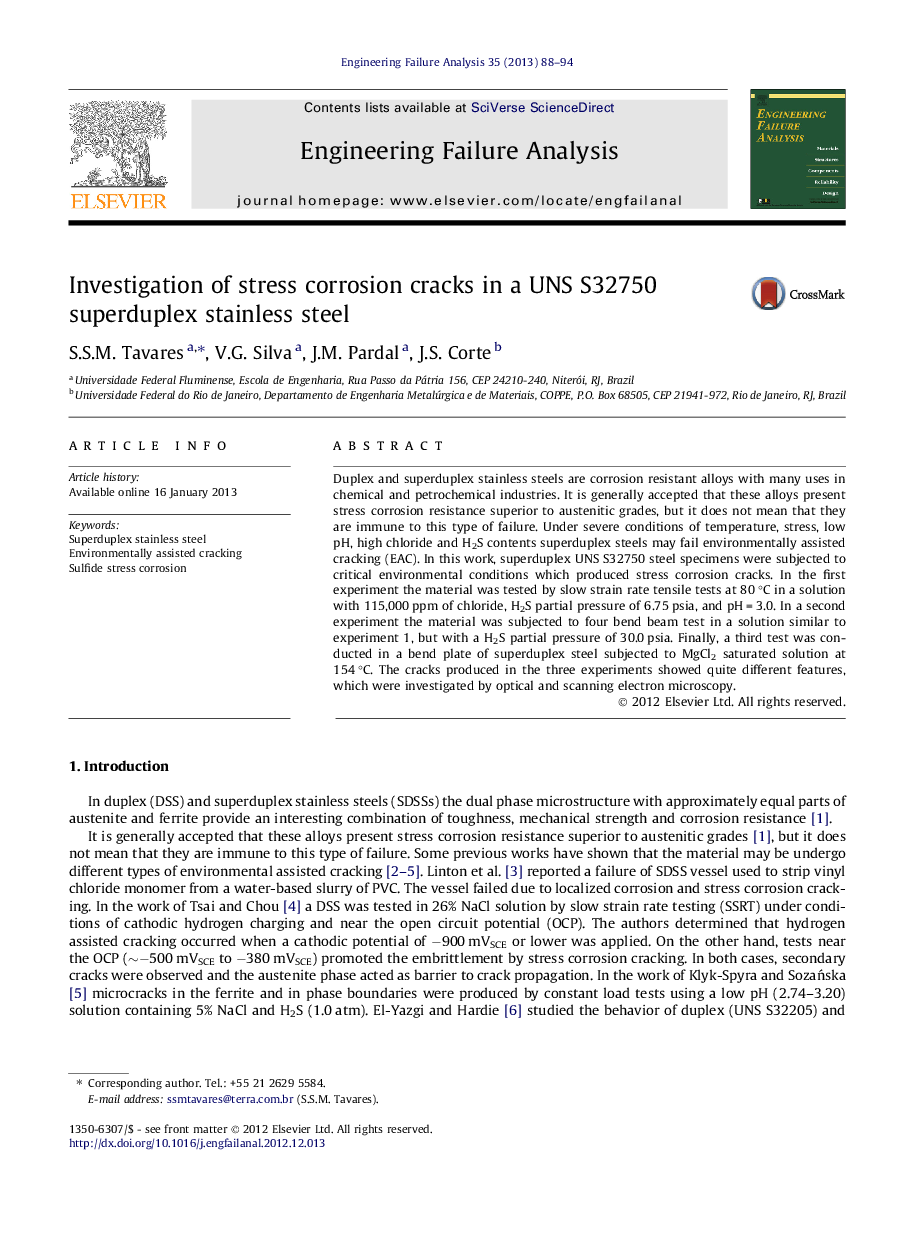| Article ID | Journal | Published Year | Pages | File Type |
|---|---|---|---|---|
| 773975 | Engineering Failure Analysis | 2013 | 7 Pages |
Duplex and superduplex stainless steels are corrosion resistant alloys with many uses in chemical and petrochemical industries. It is generally accepted that these alloys present stress corrosion resistance superior to austenitic grades, but it does not mean that they are immune to this type of failure. Under severe conditions of temperature, stress, low pH, high chloride and H2S contents superduplex steels may fail environmentally assisted cracking (EAC). In this work, superduplex UNS S32750 steel specimens were subjected to critical environmental conditions which produced stress corrosion cracks. In the first experiment the material was tested by slow strain rate tensile tests at 80 °C in a solution with 115,000 ppm of chloride, H2S partial pressure of 6.75 psia, and pH = 3.0. In a second experiment the material was subjected to four bend beam test in a solution similar to experiment 1, but with a H2S partial pressure of 30.0 psia. Finally, a third test was conducted in a bend plate of superduplex steel subjected to MgCl2 saturated solution at 154 °C. The cracks produced in the three experiments showed quite different features, which were investigated by optical and scanning electron microscopy.
► The damage mechanism in superduplex steel depends on H2S content and testing method. ► Hydrogen embrittlement was observed in tensile tests with moderate H2S content. ► Four bend tests in high H2S pressure caused anodic dissolution of ferrite. ► Tests in saturated and boiling MgCl2, without H2S, provoked branched cracks.
